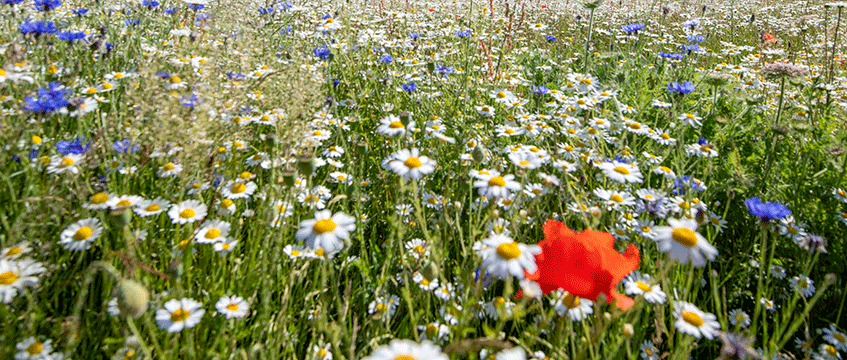Biodiversity gain will become a condition of all new planning permissions in England when the provisions now in the Environment Bill are enacted.
Exceptions are likely to be minimal, but for now we will have to wait to see what they are. The bill allows ministers to make regulations to cover this in due course.
Biodiversity net gain is nothing new in planning, of course. It already features in the National Planning Policy Framework for England, and some local authorities have included specific percentage requirements in their local plans. The Environment Act will make this a compulsory requirement throughout England.
How will biodiversity gain work?
Development sites will have to be appraised using the Defra Biodiversity Metric. Version 3.0 was published earlier in July, the newest version of a metric which has already been in use for some time. The number of pre-development biodiversity units on the site will be measured and compared with whatever will be left afterwards. If the count has not increased by 10% – the statutory minimum stated in the Environment Bill – other sites will have to be found to make up the shortfall. There will also be an option to buy biodiversity credits instead. We do not know how much these will cost yet, but the new legislation obliges ministers to set the price at a level which will encourage developers to provide physical biodiversity gain rather than to circumvent the requirement by paying for credits. Prices of £20,000 upwards per biodiversity unit are in circulation, anything up to £50,000 per unit.
A developer’s plan for biodiversity gain will have to be approved by the local planning authority before work on site can start. This must show how the environmental impact of the development has been minimised, by reference to the mitigation hierarchy of “avoid, reduce, remediate, compensate”. It must also present the calculations for biodiversity units before and after the development. If biodiversity credits have been purchased instead, the certificate of purchase must be presented.
Biodiversity gain sites will be recorded in a new register. The gains themselves should be secured for at least 30 years.
Security will be achieved by a combination of the automatic condition which will henceforth apply to all new development, section 106 planning obligations and a new type of land contract, the conservation covenant. Conservation covenants are introduced by Part 7 of the Environment Bill. They will allow positive covenants to be enforced against successors in title. The benefits will be held by an approved relevant organisation. The organisation may be the local authority. It may also be a suitable charity like a local wildlife trust, or in some cases a commercial organisation like a water company.
Impact
Speaking at the RICS Rural Conference in 2020, a spokesman for the Environment Bank gave an example of a 45ha housing site in Cambridgeshire. The diversion of some of the site to provide a mere 10% of the required biodiversity units would cost an extra £61m compared with providing all the required units offsite.
My own modelling of a simple 20ha site for housing shows a pre-development biodiversity value of 40 habitat units for 20ha of cropland, and 6.8 hedgerow units for 1.7 km of boundary native hedgerow in modest condition. Area, hedgerow and river habitat are all kept separate in the Defra Biodiversity Metric and must be accounted for separately. There is also a very limited ability to trade off one type of habitat against another.
Every hectare diverted from development at a site value of £1.5m/ha, with a development density of 30 houses/ha each with a sale price of £400,000, comes to a total of £13.5m/ha forgone. Easier to look elsewhere, then? The required 10% gain is likely to require an area of more than 10ha. Our example has required a 12.5ha arable field to be divided into two with a new hedgerow and planted with a broadleaved wood to achieve the additional 10% in biodiversity units, ie 44 habitat units and 2.28 hedgerow units. The cost of biodiversity credits to cover this requirement if the price is set at £25,000/unit? £1.157m. That’s quite a sum compared with the value of 12.5ha of farmland at perhaps £25,000/ha, over £90,000/ha. Bear in mind, however, that the price of a biodiversity credit has not yet been set. Sites must also be secured for 30 years, with a risk that they might meanwhile be designated for their environmental value. Investing just £45,000/ha in a 30-year annuity at 1.1% would yield about £1,770 pa; not unattractive compared with current returns from rented farmland, farming itself and commercial forestry.
It will all be more complicated than this. Nevertheless, these figures do demonstrate the impact of the new provisions on developers, and the opportunities which might be on offer for land managers. Brownfield interest might also be stimulated.
It’s not all about big sites
Defra also launched a new small sites metric in July. The small sites metric can only be used for sites of up to 0.5ha. There is an exception for housing sites of up to 1 ha and between one to nine dwellings.
It seems likely to catch modest rural developments and conversions. For example, a farmyard conversion to commercial property use has been modelled. The site itself has virtually no biodiversity value on the metric, but a requirement to take a small strip from an adjacent field to widen a driveway triggers a calculation based on the grassland itself, and any hedgerow or trees along the existing boundary.
We all need to become familiar with the Defra Biodiversity Metrics now.








